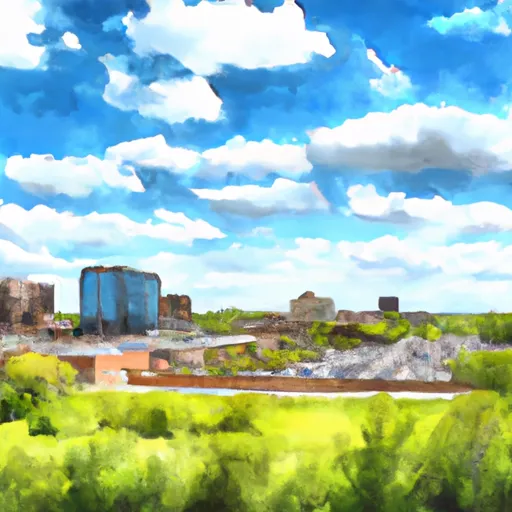-
 Snoflo Premium
Snoflo Premium
Get unlimited access to all our content
With no Ad interruptions! - Start Your Free Trial Login with existing account
Lafayette
Eden Index
Climate
6.5
•
Recreation
3.4
•
Community
1.0
•
Safeguard
4.0/10

Lafayette, Minnesota, located in Nicollet County, offers a diverse climate with all four seasons distinctively experienced throughout the year. Summers are warm and humid, with temperatures averaging around the high 70s to mid-80s Fahrenheit. Winters are cold and snowy, with average temperatures ranging from the mid-teens to low 30s Fahrenheit. Spring and fall provide pleasant transitional weather with mild temperatures and beautiful foliage.
Hydrologically, Lafayette sits within the Minnesota River Basin, which contributes to the local water resources. With numerous nearby lakes and rivers, water-based activities such as fishing, boating, and swimming are popular in the area. The Minnesota River is a prominent waterway that offers opportunities for kayaking and canoeing, as well as scenic hiking trails along its shores.
Outdoor enthusiasts in Lafayette can enjoy a variety of recreational activities. The region boasts excellent opportunities for hunting, camping, and hiking, with several state parks and wildlife areas nearby. Minneopa State Park, just a short drive away, features stunning waterfalls, hiking trails, and a bison conservation herd. Additionally, Lafayette is surrounded by vast agricultural fields, providing picturesque scenery and opportunities for birdwatching and photography.
What is the Eden Index?
The Snoflo Eden Index serves as a comprehensive rating system for regions, evaluating their desirability through a holistic assessment of climate health, outdoor recreation opportunities, and natural disaster risk, acknowledging the profound impact of these factors on livability and well-being.
Climate Health Indicator (CHI): 6.5
Lafayette receives approximately
755mm of rain per year,
with humidity levels near 81%
and air temperatures averaging around
8°C.
Lafayette has a plant hardyness factor of
4, meaning
plants and agriculture in this region thrive during a short period during spring and early summer. Most
plants will die off during the colder winter months.
By considering the ideal temperature range, reliable water supplies, clean air, and stable seasonal rain or snowpacks, the Climate Health Indicator (CHI) underscores the significance of a healthy climate as the foundation for quality living.
A healthy climate is paramount for ensuring a high quality of life and livability in a region, fostering both physical well-being and environmental harmony. This can be characterized by ideal temperatures, reliable access to water supplies, clean air, and consistent seasonal rain or snowpacks.
Weather Forecast
Streamflow Conditions
Minnesota
Area Rivers
Minnesota
Snowpack Depths
Minnesota
Reservoir Storage Capacity
Minnesota
Groundwater Levels
Recreational Opportunity Index (ROI): 3.4
The Recreational Opportunity Index (ROI) recognizes the value of outdoor recreational options, such as parks, hiking trails, camping sites, and fishing spots, while acknowledging that climate plays a pivotal role in ensuring the comfort and consistency of these experiences.
Access to outdoor recreational opportunities, encompassing activities such as parks, hiking, camping, and fishing, is crucial for overall well-being, and the climate plays a pivotal role in enabling and enhancing these experiences, ensuring that individuals can engage in nature-based activities comfortably and consistently.
Camping Areas
| Campground | Campsites | Reservations | Toilets | Showers | Elevation |
|---|---|---|---|---|---|
| Watona City Park | 28 | 986 ft | |||
| Eagle Nest Park | 20 | 1,053 ft | |||
| DeParcq Woods Military - Camp Ripley | None | 1,145 ft | |||
| Crow Wing State Park | 60 | 1,187 ft | |||
| Charles Lindbergh State Park | 40 | 1,129 ft | |||
| Stony Point | 44 | 1,336 ft | |||
| Benton Beach | 44 | 1,016 ft | |||
| Leech Lake Rec Area | 78 | 1,313 ft | |||
| Lum City Park | 18 | 1,194 ft | |||
| Truman City Park | None | 1,104 ft |
Nearby Fishing
Nearby Ski Areas
Catastrophe Safeguard Index (CSI):
The Catastrophe Safeguard Index (CSI) recognizes that natural disaster risk, encompassing floods, fires, hurricanes, and tornadoes, can drastically affect safety and the overall appeal of an area.
The level of natural disaster risk in a region significantly affects safety and the overall livability, with climate change amplifying these risks by potentially increasing the frequency and intensity of events like floods, fires, hurricanes, and tornadoes, thereby posing substantial challenges to community resilience and well-being.
Community Resilience Indicator (CRI): 1.0
The Community Resilience Indicator (CRI) recognizes that education, healthcare, and socioeconomics are crucial to the well-being of a region. The CRI acknowledges the profound impact of these elements on residents' overall quality of life. By evaluating educational resources, healthcare accessibility, and economic inclusivity, the index captures the essential aspects that contribute to a thriving community, fostering resident satisfaction, equity, and social cohesion.

